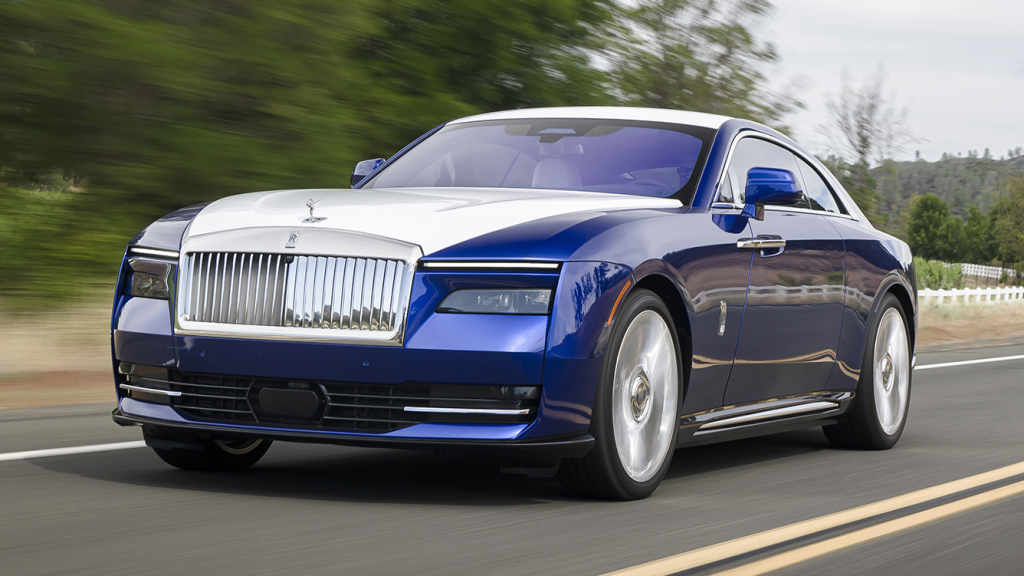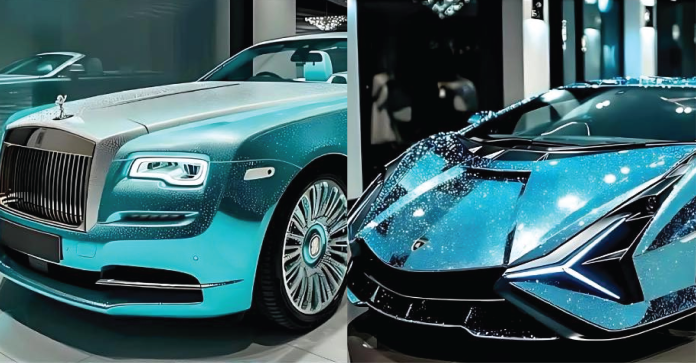Rolls-Royce
1. Silent Running: Early Rolls-Royce models were known for their exceptional quietness. In fact, the company once boasted that at 60 miles per hour, the loudest noise in the cabin was the ticking of the clock.
2. Radiator Grille: The iconic radiator grille of Rolls-Royce cars is handmade and takes a skilled worker a day to create. It’s constructed entirely by eye, without the use of a ruler.
3. Spirit of Ecstasy: The “Spirit of Ecstasy” hood ornament has a hidden locking mechanism that retracts it into the grille in case of impact, preventing theft and damage.
4. Color Options: Rolls-Royce offers an extensive palette of paint colors for their cars, with over 44,000 shades available. Customers can also create their own unique color.
5. Wood Veneer: The wood veneers used in Rolls-Royce interiors come from a single tree to ensure a consistent grain and color throughout the vehicle.
6. V12 Engines: Modern Rolls-Royce cars typically feature V12 engines that are meticulously hand-assembled. Each engine takes several hours to build and is tested rigorously before installation.
7. Bespoke Service: Rolls-Royce is renowned for its bespoke services, allowing customers to personalize nearly every aspect of their vehicle, from the embroidery on the seats to the stitching on the dashboard.
8. Starlight Headliner: One of the unique features available in Rolls-Royce cars is the starlight headliner, which uses hundreds of fiber-optic lights to mimic a starry night sky inside the vehicle.
9. Handcrafted Excellence: Each Rolls-Royce takes several months to build, with a significant portion of the process involving meticulous handcrafting by skilled artisans.
10. Ownership Experience: Rolls-Royce offers a comprehensive ownership experience, including a four-year unlimited mileage warranty, free servicing, and a 24-hour concierge service.

Lamborghini
1. Tractors: Before becoming famous for luxury sports cars, Ferruccio Lamborghini founded Lamborghini Trattori, a company that manufactured tractors. The tractor business still operates today.
2. Miura: The Lamborghini Miura, introduced in 1966, is often considered the world’s first supercar. It featured a revolutionary mid-engine layout that became standard for high-performance cars.
3. Aventador Name: The Lamborghini Aventador is named after a famous Spanish fighting bull, continuing Lamborghini’s tradition of naming cars after famous bulls or bullfighting terms.
4. Hexagon Design: Lamborghini frequently incorporates hexagon shapes into their car designs. This design element is inspired by the hexagonal shape of carbon atoms, reflecting the advanced materials used in their vehicles.
5. Carbon Fiber: Lamborghini is a pioneer in the use of carbon fiber in automotive construction. The company has its own dedicated research facility, the Advanced Composites Research Center, to develop and test carbon fiber technologies.
6. All-Wheel Drive: Lamborghini was one of the first supercar manufacturers to adopt all-wheel drive for improved handling and performance. The Lamborghini Diablo VT, introduced in 1993, was the first Lamborghini with all-wheel drive.
7. Ego Mode: The Lamborghini Aventador features an “Ego” driving mode, allowing drivers to customize the car’s settings for suspension, steering, and throttle response to their personal preferences.
8. V12 Engines: Lamborghini has a long history of producing powerful V12 engines. The company’s first production car, the 350 GT, featured a 3.5-liter V12 engine designed by Giotto Bizzarrini, a former Ferrari engineer.
9. Limited Production: Many Lamborghini models are produced in limited quantities, making them highly sought after by collectors. For example, only 63 units of the Lamborghini Sián FKP 37 were built.
10. Aventador Assembly: Each Lamborghini Aventador is assembled by hand in the company’s factory in Sant’Agata Bolognese, Italy. The entire assembly process takes around 120 hours per car.



